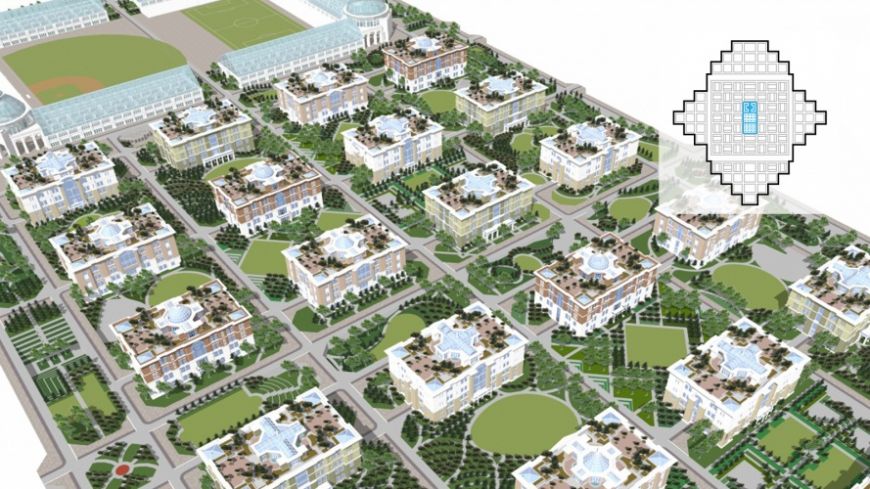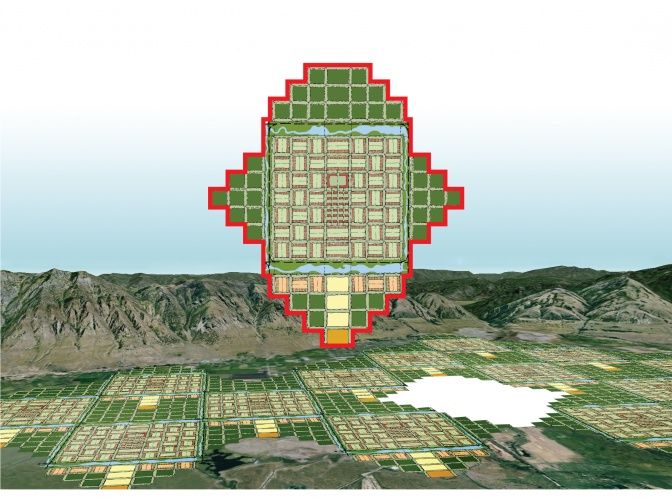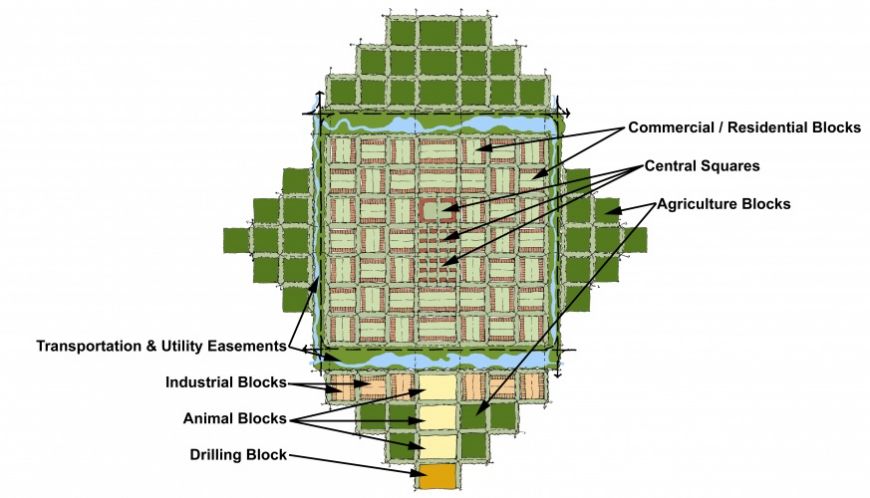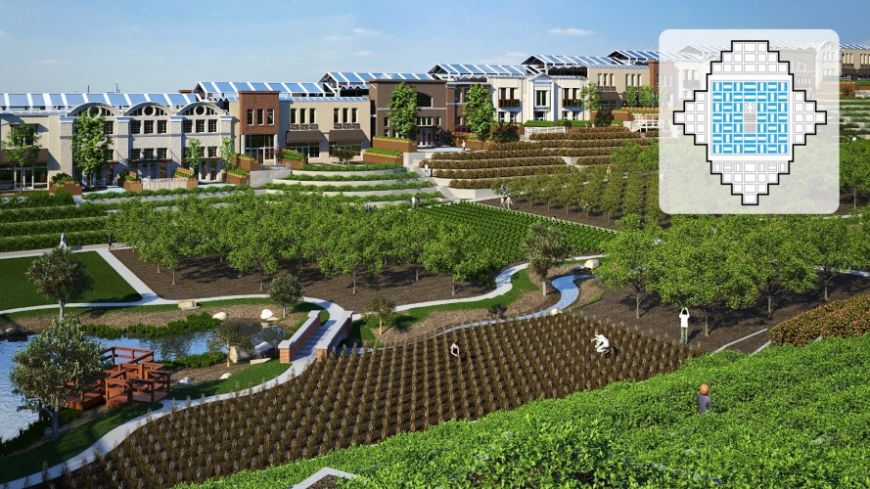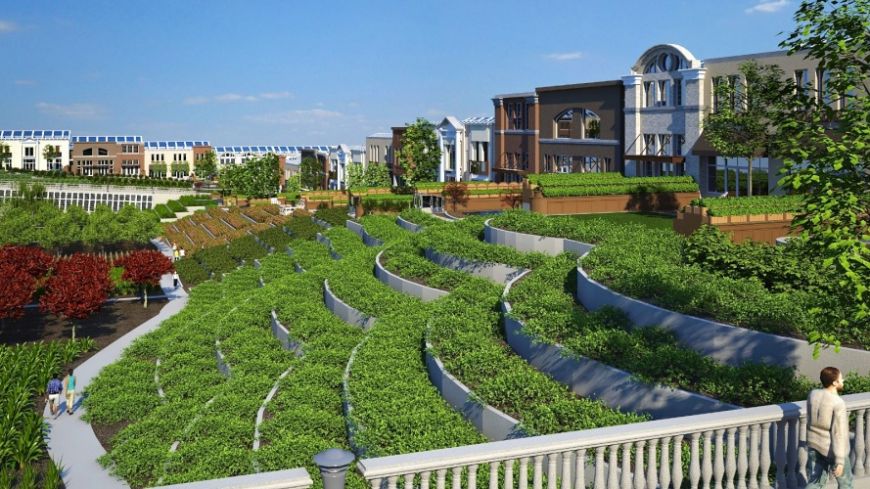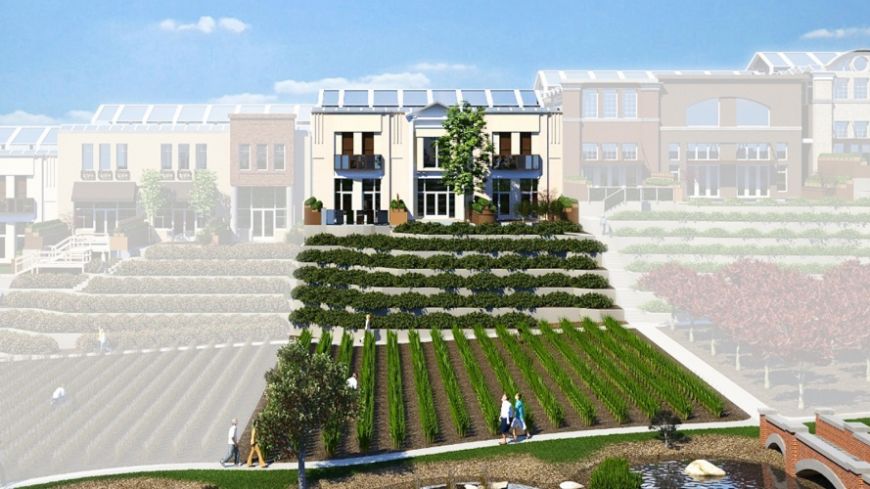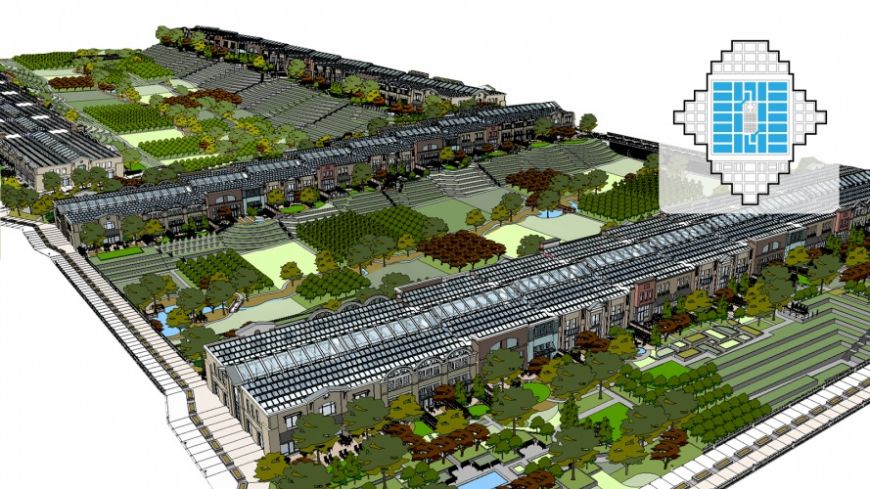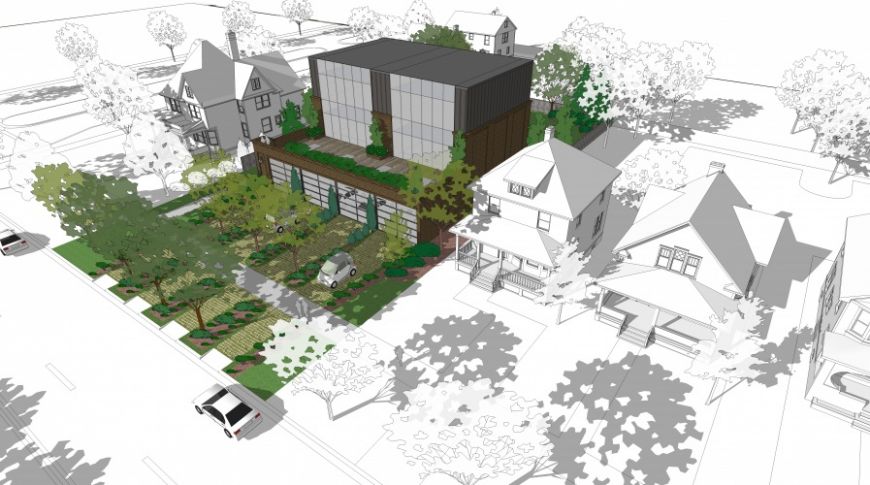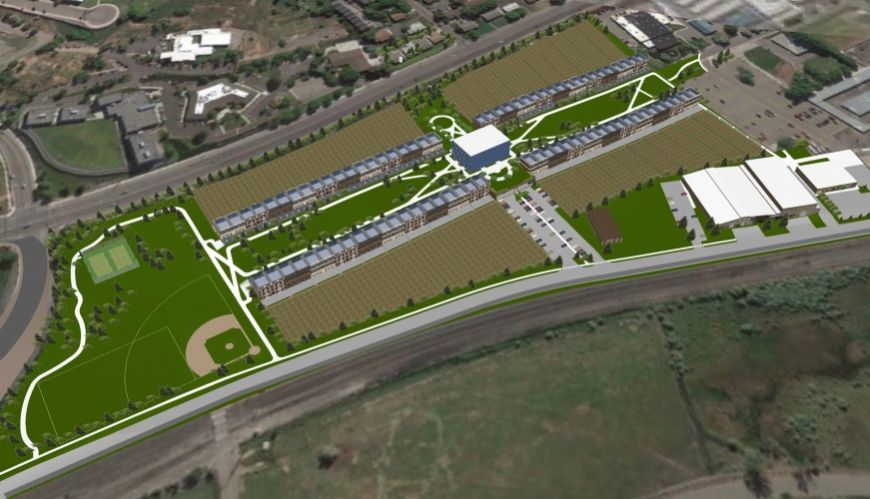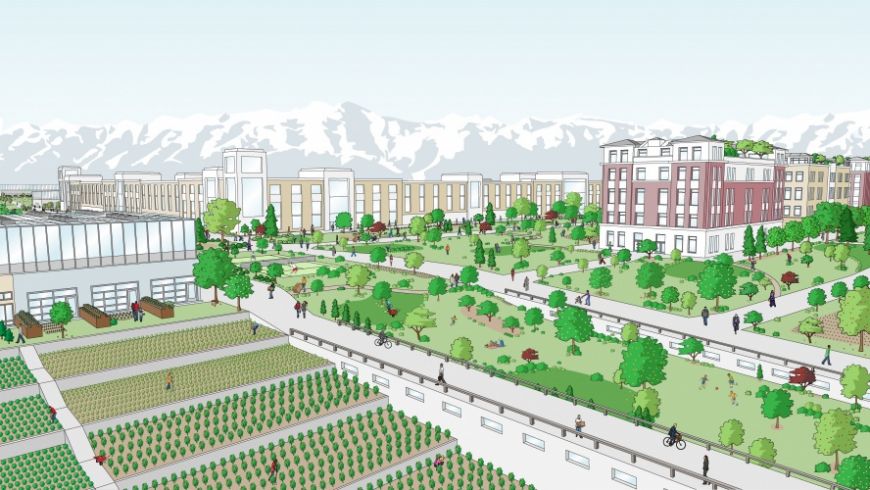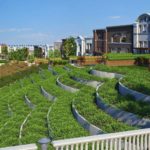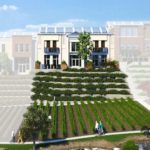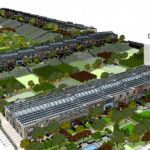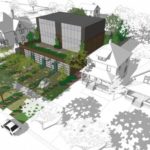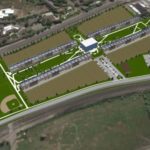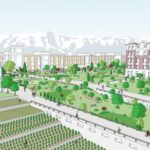In spite of Salt Lake City developer David Hall's claims that the project isn’t religious, just an experiment in ecologically sensitive urban design (despite its location near the birthplace of Joseph Smith) and that the LDS isn’t involved in any way, construction of the new community was halted after preservations sounded the alarm for a New Zion


PARADISE LOST
Vermont’s Mormon megacity called off after preservationists sound the alarm
- The central square for religious, educational, and commercial activity in the community. (Courtesy NewVistas Foundation)
- The stepped community garden protects high-ground houses from floods. (Courtesy NewVistas Foundation)
- Stepped gardens. (Courtesy NewVistas Foundation)
- Mixed-use lot. (Courtesy NewVistas Foundation)

- A NewVistas district, pictured, consisted of four villages. There would have been 24 districts in the community. (Courtesy NewVistas Foundation)
- If there were “urban decline,” the plan allowed for infill development. (Courtesy NewVistas Foundation)
- As befits its socially responsible focus, the community would also contain low-income housing and “employment opportunities.” (Courtesy NewVistas Foundation)
- Eventually, the foundation hopes to create an urban area of one million people using the village model. (Courtesy NewVistas Foundation)

